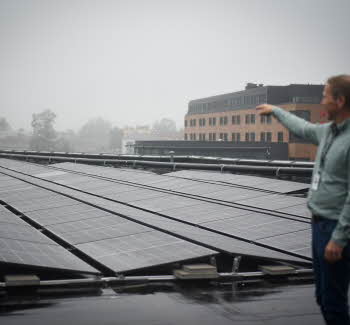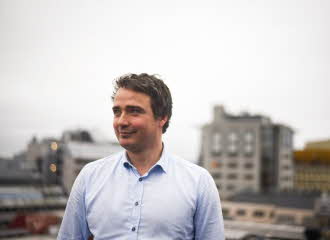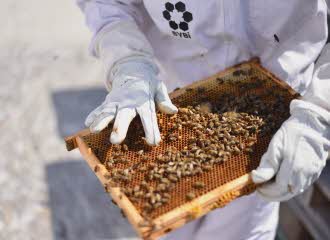Several thousand square metres of rooftop can contribute to achieving sustainability goals
"The roofs are a resource that can become a source of competition," states the head of the building and technical division of the Olav Thon Group (OTG) Ole-Martin Moe.
The group has several thousand square metres of rooftops, most of which are not suitable at this time for anything other than what they were originally intended for, namely architectural stability. But according to Ole-Martin, this is changing.
"Not only are the roofs suitable for solar panels that supply the buildings with renewable energy and reduce the carbon footprint, but can also be used to achieve the group's sustainability goal that at least 60 percent of our existing buildings have green areas by the year 2030."
Roof covered in solar panels
A sustainability measure that is suitable for large rooftops is solar roofing. Mikael Bøe Nilssen is an energy consultant in the OTG energy division and believes that solar energy is essential for the implementation of the group's sustainability strategy.
"Our operations managers are very good at saving energy, but to achieve our sustainability goals, we also need to produce our own energy," he says.
After determining which measures would be most effective for the OTG when it comes to renewable energy, there was no doubt that solar panels should be the focus.
"First and foremost, solar panels help us to achieve our sustainability goals, but they are also part of our social responsibility. Our shopping centres are very well suited for solar roofing because they have large, flat roofs and high energy consumption levels."
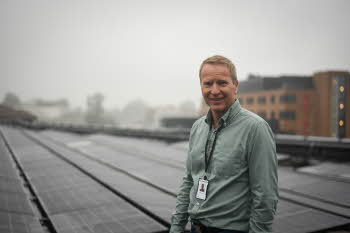
Solar panels on the Ski Storsenter
A shopping centre that has already started using solar panels is the Ski Storsenter.
"It is not a choice, but every building is expected make its roof available for this where possible," says Ole Sørlie, operations manager at the centre and a sustainability pioneer in the group.
He is referring here to the fact that renewable energy is essential for Norway to achieve the climate goals. The Ski Storsenter has just installed solar panels on 2727 square metres of roof. Roughly calculated, the solar panels will be able to produce 5-10 percent of the centre's total energy consumption," explains Ole.
"I love the idea of using a roof that would otherwise only offer shelter to produce electricity. Not only that, but it feels meaningful to contribute to a greater cause."
Ski Storsenter was among the first to install solar panels on its roof. But the plan is for more hotels and centres to eventually have solar panels installed on the roof that can cover all or part of the building's energy needs.
Award-winning for sustainable operations
Every year, the Norwegian Green Building Council presents an award to the 'Green Operations Team of the Year' to a division that has excelled in reducing the environmental impact of a building. In 2023, the operations team at Ski Storsenter secured a well-deserved victory!
Green at the top
Another way to utilise roofs is to create green areas that help preserve natural resources and biodiversity.
"When it comes to existing buildings, it can be challenging to create green areas because the roof often isn't built for this. So, we can't claim to have many green roofs at this point, but a few of the newer buildings have sedum roofs," says Ole-Martin Moe.
A sedum roof consists of green mats covered with sedum (stonecrop) plants. The advantage of this kind of roof is that the plants retain a lot of water and protect the building from heavy rainfall, which is increasingly a problem against the backdrop of climate change.
"Sedum roofing in beneficial for several reasons, but it does not contribute much to biological diversity," continues Ole-Martin.
"In a perfect world, all roofs would be covered with pocket forests, which are a miniature version of the natural woods in the area and with varied fauna. This kind of forest creates a better environment for everything from bees to people. But we are also responsible for safety and a forest is not only too heavy for a roof, but also consists of tall trees that can be blown off the building during a storm. So, our task is to find the most suitable solutions."
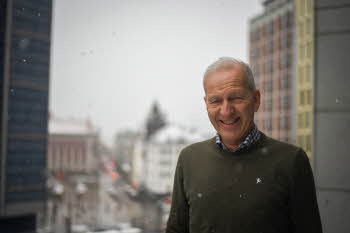
Shaded roofs can also be part of the green transition
While solar panels are necessary to produce renewable energy, green spaces are important for biodiversity. Consequently, rooftops are also suitable for two completely different, but equally important aspects of the OTG sustainability strategy. But both share a common factor that is essential for the success of our efforts, namely sun.
"Good solar conditions are important for both solar panels and green rooftops. On low roofs, such as on the Gunerius shopping centre in the centre of Oslo, it may not be suitable for either," explains Ole-Martin.
But even though some roofs are not suitable for either solar panels or green roofing, it is still possible to use the roof for the green transition.
"On one of the rooftops at Gunerius, we've tested beehives in collaboration with ByBi, and it looks like the bees are thriving and are there to stay."
"But we shouldn't focus exclusively on solar panels, stormwater runoff, bees and green roofing. Lots of roofs can also be a commercial resource, such as for outdoor dining or recreation," concludes Ole-Martin.
Bidragsytere
-

-

- MN Mikael Bøe Nilssen Energy adviser and team leader for energy and technical consulting services
